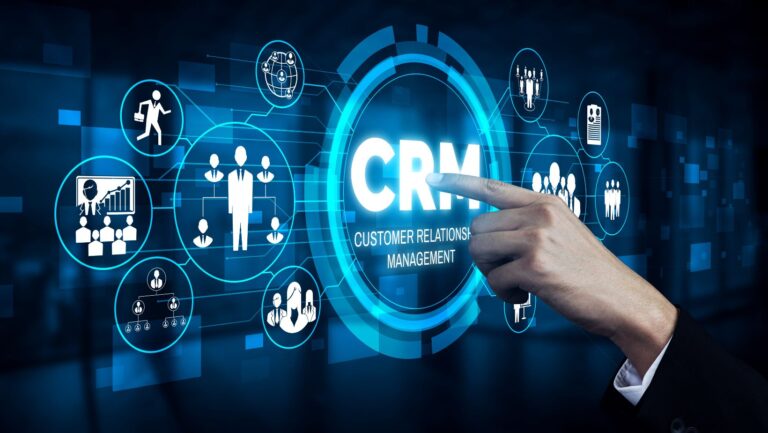Where traditional Content Management Systems keep companies bound to a static solution for extended time to development and cumbersome redundancies that delay business expansion in a rapidly, frictionless, omnichannel digital marketplace with expectations set at multiple customer engagement touchpoints throughout, a Headless CMS is the solution to the problem, for it separates the creation and management of content from generating what the customer views on the front end.
Instead, businesses can render content as they see fit on their websites, in apps for proprietary mobile apps, and even IoT devices or social media pages. With a Headless CMS, content flows more smoothly, time and energy are saved, security is heightened, and expansion is effortless in today’s digital world. From digital storefronts to digital newspapers to building a company’s digital presence to digital tools offerings, a Headless CMS is the solution for powering digital operations now and beyond.
Streamlining Content Workflows and Collaboration
Content management is required for companies that need to frequently change web pages, e-commerce catalogs, blogs, and customer-facing applications. A typical CMS connects the content backend to the frontend. Thus, if a company wants to re-skin its website or add a new application, it requires IT intervention to preserve the connection between content and design; in essence, this places additional burden upon a company’s content creators. Enter the Headless CMS as the solution, for content creators can create content without being held up by the content creators at various steps along the way.
For example, where once marketers had to wait for developers to change code in order to update a product description or to shift a marketing campaign or video/image media, they can now do it in a second. At the same time, developers can create and adjust new digital experiences without stopping the need for content integration. This splitting of the road makes for faster access to information and content integration and faster time to market for digital projects. A Headless CMS also works seamlessly with content automation software to schedule and publish content once ready. The kind of company that would utilize this would be international conglomerates, media companies, and e-commerce businesses that require constant changes to their content for their advantage through industry trends or seasonal initiatives.
Enhancing Website Performance and User Experience
Where engagement, SEO, and conversion are concerned, the faster you are recommended in site speed and performance, the better. A regular CMS has a front and back end; thus, it loads unnecessary scripts and plug-ins to accommodate all users, downloading all opportunities for all.
This leads to a lower page speed and lower performance on mobile. A Headless CMS has APIs that only load what is necessary to relay information so whether on mobile or desktop, strong or weak connection, pages load faster and perform better. For high traffic companies, e-commerce sites, and SaaS applications, a Headless CMS minimizes latency as content is delivered via basic, templated APIs. With faster delivery comes ease of use and engagement, user retention, and sales conversion. Moreover, because a Headless CMS is frontend agnostic, developers can take advantage of the newer frameworks on the scene React, Next.js, Vue.js, or Angular to build responsive, visually appealing frontends. Thus, businesses can more easily differentiate themselves from the competition with beautiful, customized designs that promote customer engagement and retention.
Scaling Your Business Without Technical Limitations
As companies expand, their digital realities must unavoidably expand in tandem from new products with new geographical markets to increased traffic or shifting customer demands. However, a legacy CMS is not only non-expanding, but it also requires frequent migration, redeployment, and re-updating across infrastructures to accommodate a company’s new digital needs. Such restraints prevent company expansion and exacerbate time-to-market and unnecessary OpEx that make presenting a company’s digital reality even more complicated. Where a legacy CMS hinders future expansion and clunky old systems or barebones skins a Headless CMS encourages expansion. A legacy CMS restricts how content is presented to a single type of frontend display, typically never adjusted via templates content gets locked in one system.
A Headless CMS, however, has its content repository in one place; it pushes out content to any digital frontend needed through API integration. Therefore, creating new digital front ends is simple and doesn’t require redoing the entire thing from square one. For example, if a brand wants to add more merchandising down the line, it can link merchandising to its CMS without having to redevelop extensively. The same goes for brands wanting to branch out with more services or ancillary mobile applications. E-commerce brands, brands in the digital and entertainment space, and those in service-based industries all find themselves needing to update inventory, expand digital storefronts, or seek new avenues for engagement, experiencing no technological barriers. Similarly, international businesses encounter language difficulties and different currency conversion and tax/compliance regulations by region. A Headless CMS alleviates the challenge, as a single interface can control multilingual capabilities, inventory, and tax regulations based on region.
A business does not have to start from scratch with a separate website in every country or region where it conducts business; a Headless CMS can geo-target and dynamically render content so that everyone, everywhere, receives the correct experience. Ultimately, the Headless CMS enterprise is going to enjoy continual, never-ending scalability far into the future, allowing them to establish their content endeavors for the foreseeable future and scale as much as they’d like without any incursions of technical debt and without sacrificing usability. The sky’s the limit when it comes to growth, customer engagement, and successful e-commerce, or at least it can be when content management is a modern, API-first endeavor.
Strengthening Security and Data Protection
Security becomes central to a content management solution. Hackings occur regularly, people casually discuss stolen information, and GDPR-like compliance requirements with data retention are found in nearly every field. Yet, with a typical CMS solution, holes exist due to plugins, a single attack vector, and reliance on legacy technologies. A Headless CMS reduces security threats because it separates what is known as the back end (where the content is stored) from the front end. If the front end isn’t visible to the public, it becomes more difficult for hackers to exploit site vulnerabilities. In addition, enterprise-level Headless CMS solutions possess increased security measures such as API authentication, data-at-rest encryption, multi-factor authentication (MFA), and role-based access control security. This translates to fewer users who can change content, reducing the risk of accidental changes, hacks, breaches, or even vandalization of a site. For enterprises in banking, health, and e-commerce, security is paramount not only for customer confidence but also for compliance requirements. A Headless CMS ensures compliance with GDPR, HIPAA, and PCI DSS, so content is kept secure and stabilized from outside data regulation standards.
Personalizing Customer Experiences with AI and Automation
Personalization is paramount. Consumers not only expect product recommendations and articles read this year and recommended last year, but also anticipated marketing efforts and content renderings.

A Headless CMS allows brands to integrate an AI personalization engine to drive personalized renders based on consumer actions, individual needs, and demographic-specific audiences. For example, if someone is on a retail site trying to buy something, with a Headless CMS in place, that site can more easily present recommended products based on items the user viewed and purchased before. If a person is on a news website, the Headless CMS allows for more effective rendering of suggested articles, suggested videos, and recommended paywall subscriptions. The combination of a Headless CMS with AI analytics, marketing automation, and CRM equals hyper-targeted content that improves conversion rates, increases brand loyalty, and boosts customer lifetime value.
Reducing Maintenance Costs and Development Overhead
Furthermore, expensive maintenance comes from traditional CMS systems as companies always need to update the CMS itself, manage plugins and add-ons, and always be fixing security breaches. In addition, whenever something needs to be adjusted on the front end, there’s usually a need to access the back end, meaning design and content teams unnecessarily have to collaborate more than required. Cheaper maintenance becomes possible with a Headless CMS as there are no excessive software dependencies, reduced strain on servers, and improved content delivery. Because the front end can be completely independent of where the content lives, for example, a company can adjust its web front end, create a digital experience, or adjust branding and never have to interfere with the back-end content workflow. From a developer’s perspective, a Headless CMS provides additional freedom as they’re not bound to antiquated CMS frontend technologies and can build with whatever is most readily accessible and cutting-edge for them. A good way of doing this is finding a reliable CMS provider, you could for example take your whole CMS set-up and build with Storyblok by using their software.
Conclusion
For any company likely to benefit from improved content management, digital experiences, and scalable solutions across the enterprise, investing in a Headless CMS is a straightforward decision. Companies not only become more flexible and secure and experience faster performance by dissociating content from the front, but they also get the situational architecture for explosive success down the line and in an otherwise hyper-competitive marketplace. Whether the company is an e-commerce company, media startup, SaaS platform, or enterprise, this technological solution offers the backend needed to ease the workforce and customer-facing efforts to expand, adjust, pivot, innovate, customize, and proactively stimulate marketing and customer needs with little friction and drain on resources. With so many new companies entering the digitally transformed fray each day, this kind of competitive edge is essential for expansion and technology that entrenches itself for the future makes such expansion a breeze.




